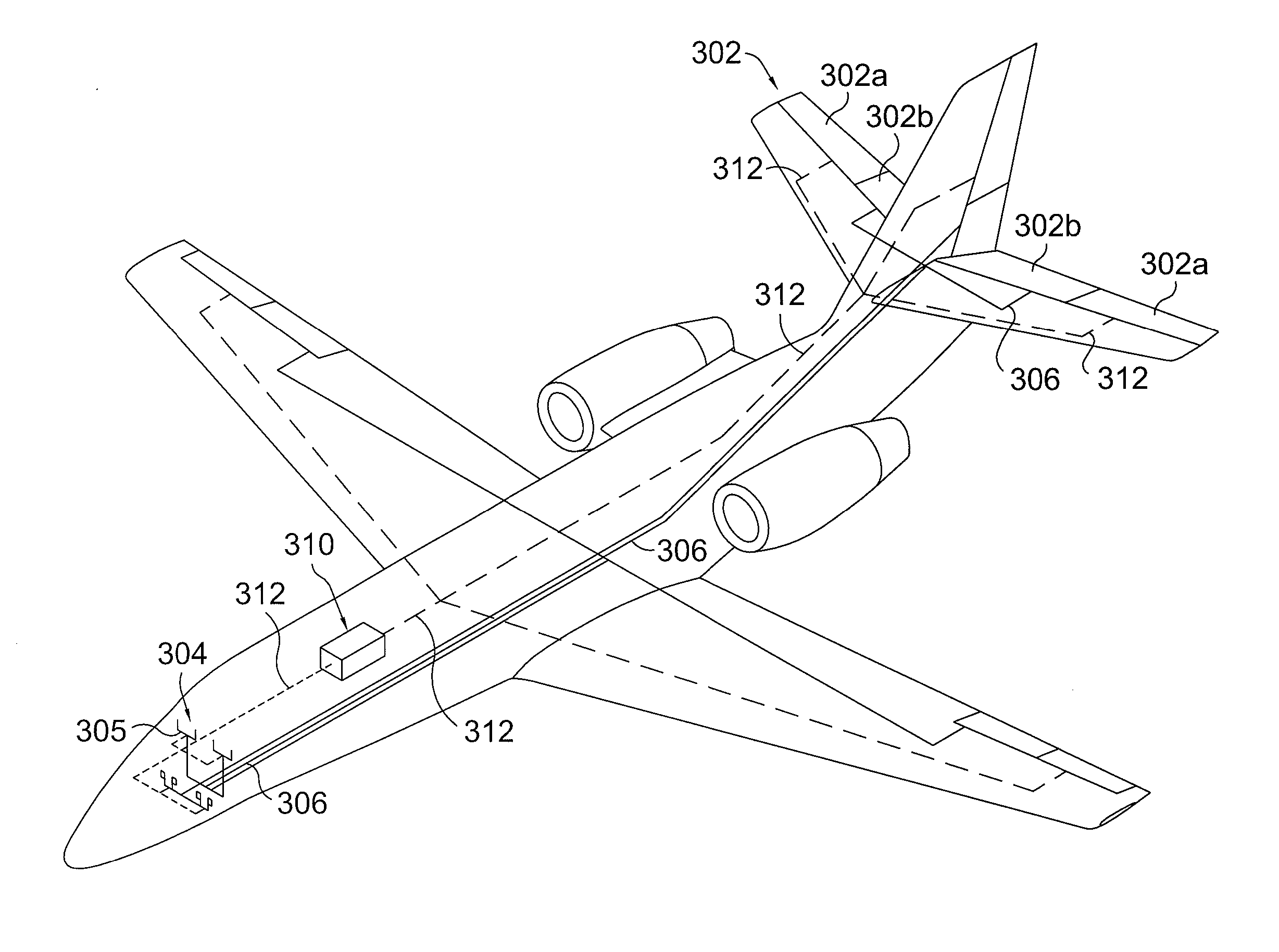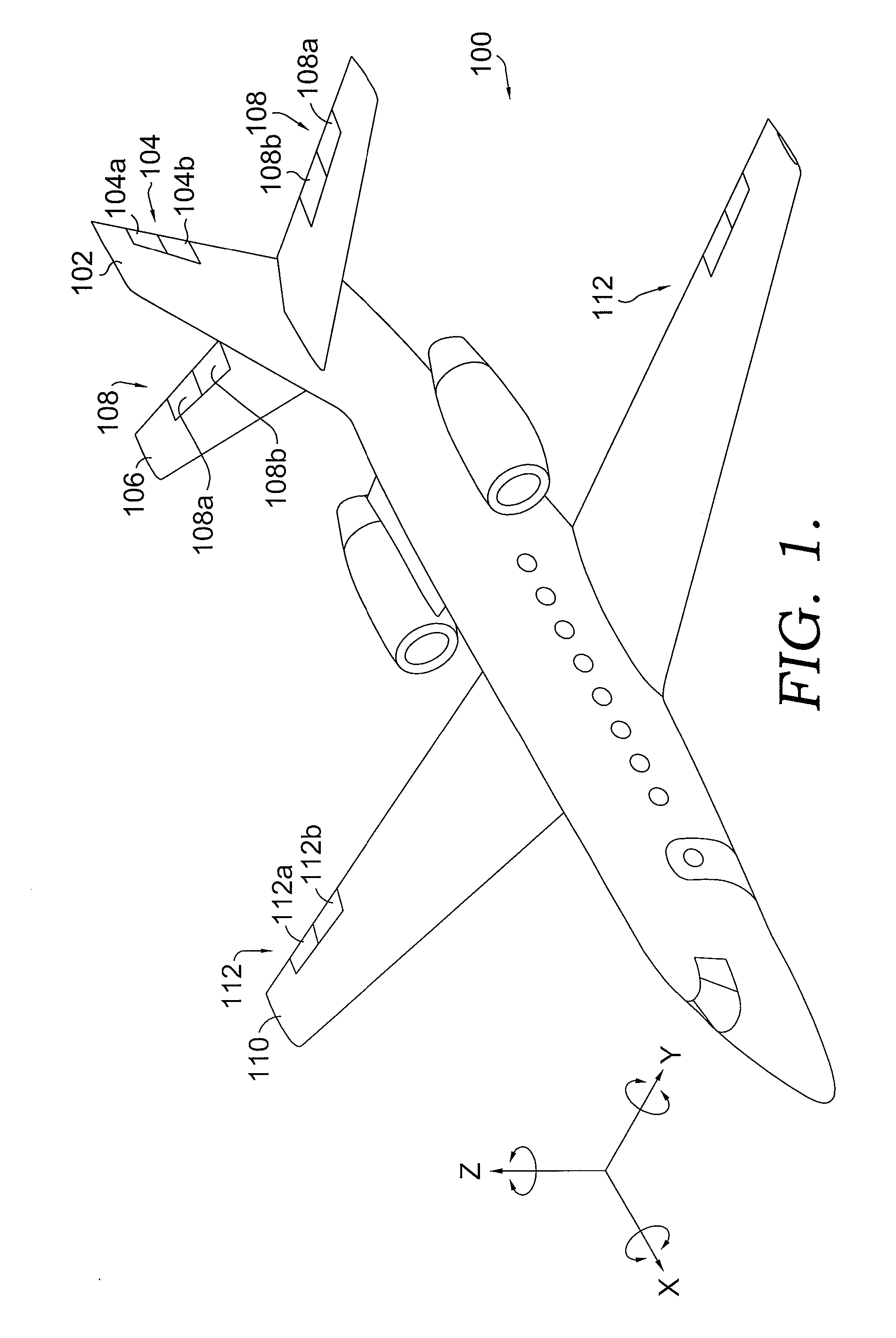Flight control systems
a control system and flight control technology, applied in the field of flight control systems, can solve the problems of limited work available at the control surface, inability to provide redundancy, and poor failure tolerance of mechanical systems, so as to achieve sufficient back-up controls and improve overall flight control operation.
- Summary
- Abstract
- Description
- Claims
- Application Information
AI Technical Summary
Benefits of technology
Problems solved by technology
Method used
Image
Examples
first embodiment
[0044] For aircraft operating with significantly more gross weight and at even higher airspeeds, e.g., commercial jetliners, the reversible mechanical manual portion of the system described in the above may prove insufficient. Referring back to the first embodiment disclosed in FIG. 4, the mechanical arrangement comprising control means / stick 304 and link 306 may be unable to provide the power necessary to properly actuate control surface 302b, and variations in the control surface hinge moments may be unable to provide the appropriate feedback and feel to the pilot.
[0045] Under these circumstances, a second embodiment like that shown in FIG. 7 may be preferred. As can be seen from the figure, this embodiment 700, like the first, comprises at least one control surface 702 having a plurality of individual segments 702a and 702b. Like with the first embodiment, surfaces 702a are operated using electronically controlled servo-actuators 708. And also like the first embodiment, a mechani...
second embodiment
[0047] When the pilot moves the cockpit controls 704 from a first position to a second position, device 714 will receive the resulting mechanical displacement through linkage 706 and provides the force necessary to rotate control surface 702b to a corresponding and directly related angular displacement. Cockpit controls 704 are shown as being hand operated in FIG. 7, but could alternatively be a foot-operated arrangement. In the preferred embodiment, power control device 714 is a mechanically driven power control unit (PCU). One skilled in the art will recognize that mechanically driven PCUs are commercially available powered devices which are typically mounted on the trailing edge or other longitudinal stabilizing surface of the aircraft and can be used to obtain pitch-control moments. The mechanically-driven variety used herein receive mechanical input from an input rod and then irreversibly produce an output having the force necessary to create a corresponding angular displacemen...
PUM
 Login to View More
Login to View More Abstract
Description
Claims
Application Information
 Login to View More
Login to View More - R&D
- Intellectual Property
- Life Sciences
- Materials
- Tech Scout
- Unparalleled Data Quality
- Higher Quality Content
- 60% Fewer Hallucinations
Browse by: Latest US Patents, China's latest patents, Technical Efficacy Thesaurus, Application Domain, Technology Topic, Popular Technical Reports.
© 2025 PatSnap. All rights reserved.Legal|Privacy policy|Modern Slavery Act Transparency Statement|Sitemap|About US| Contact US: help@patsnap.com



